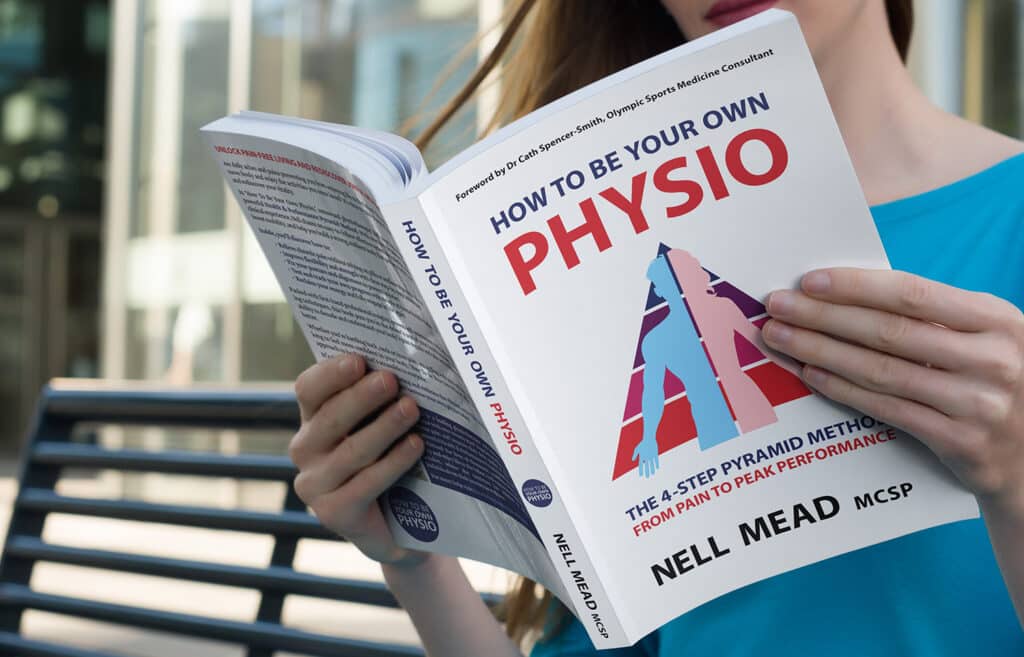Online physio: just “virtual first”, or can virtual be enough?
I’ve been doing quite a lot of online physio in the past year, as you might imagine. At the moment, the guidance from my governing body is that I still have to think “virtual first” – in other words, the first treatment session has to be online. I only bring patients into clinic if the patient and I both agree that the potential benefits of treatment outweigh the potential risks associated with the pandemic.
Meet Adam…
This is how I met Adam. Adam is a personal trainer. He specialises in helping his clients to recover from their injuries, and describes himself as a total anatomy geek. But it’s a lot harder to analyse your own injuries than it is other people’s! Sensibly, when Adam developed pain in the front of his left shoulder, and it wasn’t getting better, he put his ego down and asked for help – which is how he ended up having online physio with me!
Adam had recently increased his weight training, and while his body had seemed to cope at first, after a couple of weeks his left shoulder started hurting. Adam was very sensible about this: he stopped doing the lifts that were painful, increased his stretching regime, and (understanding the close relationship between ribcages, necks and shoulders) he didn’t work only on his shoulder. He showed me his stretching regime and I was impressed – it was quite thorough. However, his shoulder was still limited at the end of range, and he said it felt “blocked”. His thoracic rotation to the left was also restricted, which he said he had first noticed during an episode of bialteral carpal tunnel syndrome around a year earlier.
Online physio: the testing process
In an online physio session, I can’t touch patients and feel restrictions in the way I would in clinic, so I’ve had to develop a series of movement and treatment tests which help me to work out what’s really going on with my patients. In Adam’s online physio session, the most relevant movement tests seemed to be left thoracic rotation, left clavicular elevation/depression (I use a test which I call the “chair dance”) and right neck lateral flexion. These all felt (and looked!) restricted around the area of Adam’s first rib/clavicle.
We moved onto some treatment tests, to triangulate the movement tests. I taught Adam a couple of techniques to mobilise his own clavicle and first rib, and then talked him through doing so, for about five minutes, by which time the joints were starting to feel more comfortable.
We retested the movements – left thoracic rotation, chair dance and lateral neck flexion. All of them had improved. I then asked him to test his shoulder range of movement – which was now full and pain free, for the first time in around three weeks!
Homework…
We then discussed how to maintain it, because nobody wants to spend the rest of their lives having to regularly mobilise their clavicles and first ribs if they can help it! I like closed-chain exercises to encourage muscle control and harmony, especially (for the upper quadrant) with intention through the fingers. So I taught Adam some of my favourite shoulder exercises for control and strength: leaning against the wall, downward facing dog, and swiss ball rollout work, always focusing on the intention through the fingers.
Most patients would require follow-up online physio sessions, or potentially at least one review in clinic, to ensure that they were mobilising and practising the exercises correctly – but most patients don’t have quite Adam’s body awareness and understanding of anatomy! So when he emailed me two weeks later to say he’d made a full recovery (and left an amazing five-star Google review) I felt quite confident to let him fly the nest. Not everyone needs a long course of treatment, or even necessarily to “graduate” from online physio to clinic!
If you think you might benefit from an online physio session with me, please call my team on 0207 175 0150 or email help@nellmead.com, and let’s get you started on the road to recovery.







